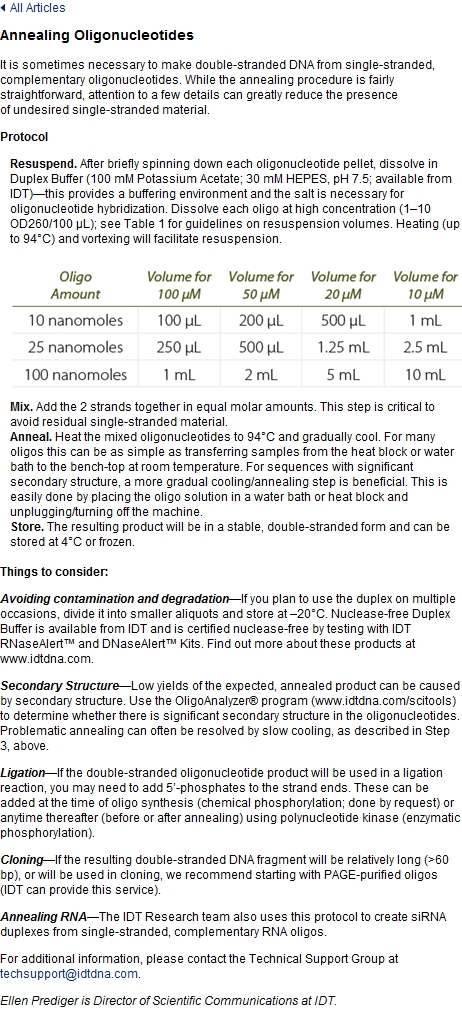[FAQ]РкСжЧЯНУДТ СњЙЎ [IDT]
[IDT] oligo annealing protocolРЛ ОЫАэ НЭНРДЯДй~[ОїБзЗЙРЬЕх]
ШВМКШё 2010-08-30 13:55:12 (6,736 HITS)
It is sometimes necessary to make double-stranded DNA from single-stranded oligos. While the annealing procedure is very simple, attention to a few details can greatly reduce the presence of undesired single stranded material.
Method:
1. Dissolve oligos in DuplexBuffer (100mM Potassium Acetate, 30 mM HEPES, pH 7.5). The presence of some salt is necessary for the oligos to hybridize. Dissolve each oligo at high concentration (1 - 10 OD260 units / 100 uL).
2. Mix two stands together in equal molar amounts. If you do not there will always be single stranded material left over.
3. Heat to 94oC and gradually cool. For many oligos this can be as simple as transferring to the bench-top at room temperature. For sequences with significant hairpin potential, a more gradual cooling/annealing step is beneficial; this is easily done by placing the oligos in a water bath or temp block and "unplugging the machine".
4. The resulting product will be in stable, double-stranded form and can be stored at 4oC or frozen.
Things to consider: If the product will be used in a ligation reaction, the addition of 5' -phosphate may be needed. This can be done at the time of oligo synthesis (chemical phosphorylation) or at any time thereafter using PNK (enzymatic phosphorylation). If the oligos are relatively long or to be used in cloning, starting with PAGE purified oligos is recommended.
|
 IDT
IDT
